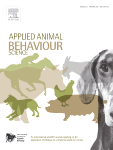Document type : Article published on the DecodAgri website
Author: Renaud d'Hardivilliers
Preview: Most sows in conventional agricultural systems* spend part of their lives in cages, a practice often decried by animal rights groups. But quite separately from the introduction of standards labels such as the organic label, new techniques are being introduced that reducing the amount of time they spend caged. At what points in their lives are sows caged and why? And what are the new techniques intended to improve animal welfare? An explanation. […]
Yes, it is true that a significant majority of sows spend parts of their lives in cages, conditions that fail to maximise their welfare. In conventional farming, the use of restraints helps to reduce problems associated with reproduction and the crushing of piglets. It also makes the farmer's work easier. However, since 2013, most of the gestation period has been spent in a shared pen. Now, farrowing sows can enjoy a new installation now coming on the market and known as the "freedom maternity ward". It is technically advanced but the obstacle to its wider use is financial since it adds no value to the sale price of the pigs. Moreover, no standards are currently in existence for free-range maternity pens, leading some farmers to hold back from taking the plunge.
For artificial insemination and early gestation, restraint provides a way to safeguard reproduction during thefirst month of gestation. In several European countries, the trend is for this restraint phase to be reduced.






